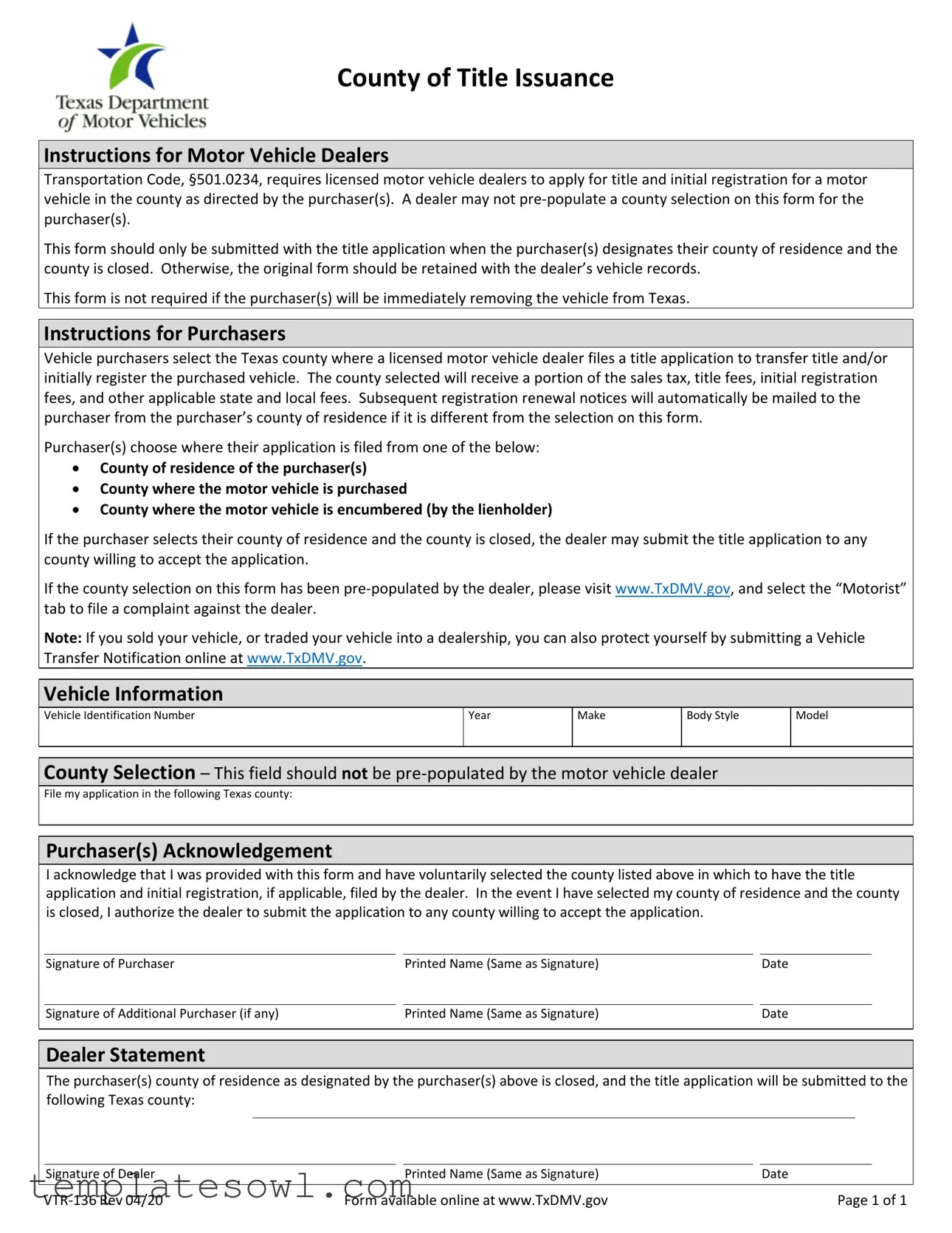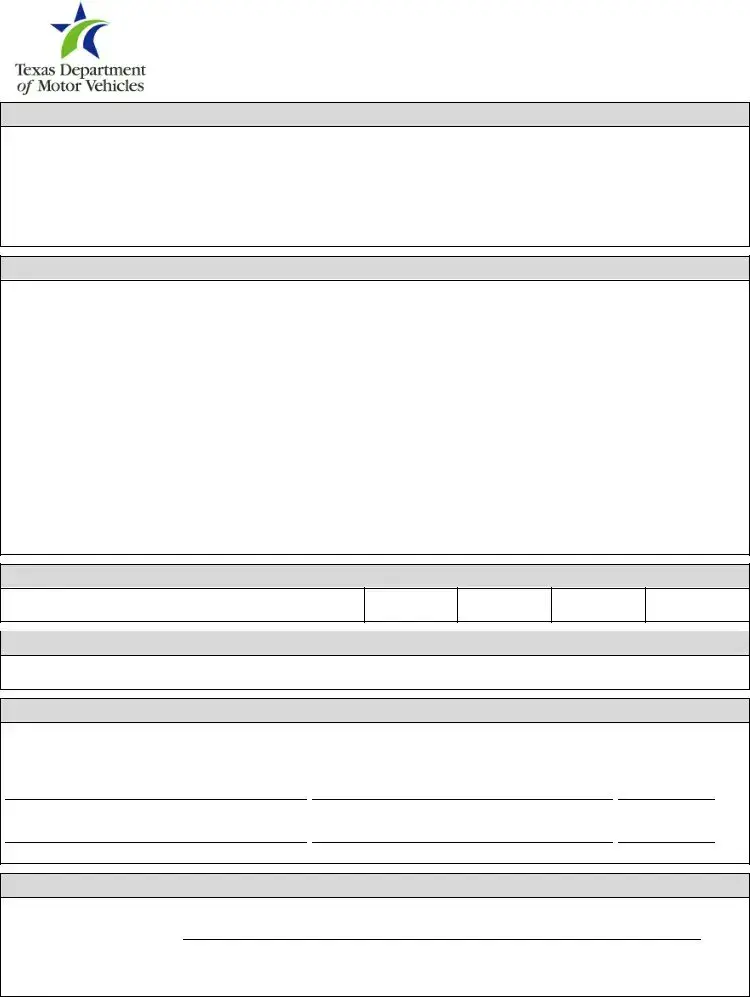What is the VTR 136 form used for?
The VTR 136 form is a document required by the Texas Transportation Code for licensed motor vehicle dealers. It is used to determine the county where the title application and initial registration for a purchased vehicle will be filed. This form ensures that the dealer adheres to the purchasers' designated county, especially if their county of residence is closed.
When should a dealer submit the VTR 136 form?
A dealer should submit the VTR 136 form when the purchaser designates a county for their title application, and that selected county is closed. In this case, the dealer can submit the title application to another willing county. If the form is not needed, it should be retained with the dealer's vehicle records.
Can a dealer pre-populate the county selection on the VTR 136 form?
No. The dealer cannot pre-populate the county selection on the VTR 136 form. The purchaser must make their own selection regarding the filing county. If a dealer does pre-populate the county, the purchaser can file a complaint at www.TxDMV.gov.
What happens if the purchaser immediately removes the vehicle from Texas?
If the purchaser is immediately removing the vehicle from Texas, the VTR 136 form is not required. The purchaser can proceed with the transaction without this form in such cases.
How does county selection affect taxes and fees?
The selected county will receive a portion of sales tax, title fees, and registration fees. This means that where the application is filed impacts the revenue distribution. It’s important to choose carefully to ensure tax and fee obligations are handled correctly.
What options do purchasers have for selecting a county?
Purchasers can select from three options for filing their title application: the county of their residence, the county where the vehicle is purchased, or the county where the vehicle is encumbered by a lienholder. This gives flexibility based on the purchaser’s situation.
What should a purchaser do if they sold or traded their vehicle?
If a purchaser sold or traded their vehicle, they should submit a Vehicle Transfer Notification online at www.TxDMV.gov. This helps protect them from potential issues related to the previous vehicle ownership.
What information is required on the VTR 136 form?
Essential information includes the Vehicle Identification Number (VIN), year, make, body style, model of the vehicle, and the purchaser’s selected county. Accurate details are crucial to ensure the title application is processed correctly.
What is required from the purchaser regarding the acknowledgment section?
Purchasers must sign and print their name in the acknowledgment section of the VTR 136 form. This indicates that they have received the form and voluntarily selected the filing county. If there’s an additional purchaser, they must also provide their signature and printed name.

